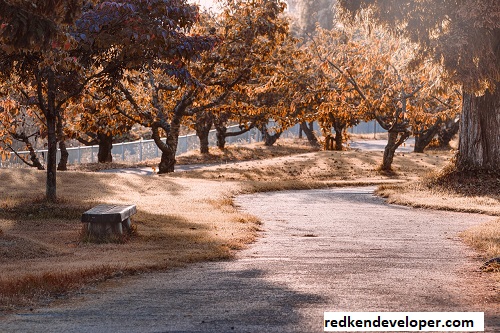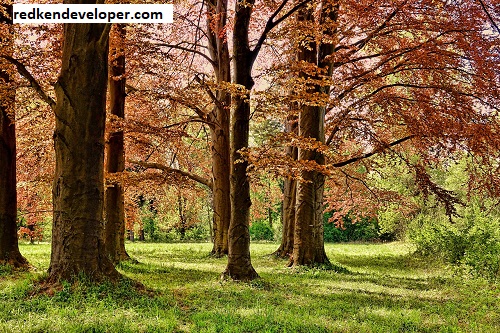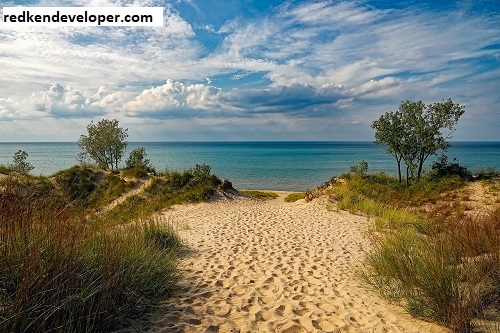Raleigh Unified Development Ordinance: An Overview
Raleigh Unified Development Ordinance:
The Raleigh Unified Development Ordinance is a key land use and development framework of Raleigh, North Carolina. Created to simplify the rules and enhance the planning of the city, Promotes sustainable growth, community engagement, and overall quality of life for its citizens. Relate the goals and components of the UDO, implementing strategies that will be put in place to affect the community and many frequently asked questions.

What is the Raleigh Unified Development Ordinance?
The UDO is a one-stop repository for land-use regulations and development ordinances that govern land use and zoning within the city of Raleigh. UDO was a single-point document formed by combining multiple other zoning regulations, and subdivision ordinances. Intended to simplify the development process while ensuring an efficient and predictable course in line with the vision for sustainable growth in the city of Raleigh.
Goals of the UDO:
Raleigh Unified Development Ordinance:
- UDO was designed with a significant set of strategic goals:
- It Standardizes Development Processes: The consolidation of many regulations through the UDO makes review processes of development easier to understand for developers and citizens.
- Pursues Sustainable Growth: The UDO promotes sustainability through mixed-use developments, preservation of open spaces, and walkable neighborhoods. Enhances Community Engagement: Seeks public involvement in the planning process as a way of ensuring that residents are allowed to participate in decisions affecting their neighborhoods.
- Providing Predictability: Consistency A clear policy of land use and development standards provides predictable conditions for the private sector and the community.
Key Components of the UDO The City of Raleigh UDO :
Raleigh Unified Development Ordinance:
1. Zoning Districts:
- The UDO establishes several zoning districts, each with permitted uses, dimensional standards, and regulations of development. The principal classifications include:
- Residential Districts These usually accommodate single-family dwellings, multi-family housing, and mixed-use residential developments.
- Commercial Districts Retail office use is fostered to stimulate economic vitality within the city.
- Industrial Districts Manufacturing, warehousing, and other industrial uses.
- Special Purpose Districts Parks, public facilities, and unique uses capable of serving the community.
2. Development Standards The UDO provides for specific development standards that apply to all development projects and includes:
- Rear Yard Setbacks and Height Restrictions: Requirement of setbacks of buildings from property lines. Height that will be allowed with due regard to neighboring properties.
- Lot Dimensions: Minimum lot sizes and dimensions for uniformity.
- Parking Requirements: Determination of minimum parking requirements based on types of land use as a means of promoting responsible transportation planning.
3. Site Plan Review:
One of the key features of the UDO is that the site plan review shall ensure the proposed development will meet the city’s standards on design and operating characteristics. The process entails:
- Pre-Application Meetings: In the process, developers must meet with the city staff early in the project discussion and get feedback on the proposal.
- Submission Requirements: Documentation requirements for the approval of the site plan including architectural drawings, landscaping plans, and environmental assessments.
- Approval Process: City staff review site plans, and depending on the nature of the project, are provided for public hearings.
4. Conditional Use Permits:
Some land uses require a conditional use permit (CUP) to ensure that there is further review to determine potential impacts. The UDO has criteria guiding the issuance of a CUP so that developments stay within community goals.
5. Neighborhood Conservation Districts:
NCDs incorporate existing neighborhoods’ character in the UDO. NCDs try to retain certain architectural designs and historical integrity while developing in harmony.
6. Environmental Standards:
Environmental standards for creating sustainable environments consider:
- Stormwater Management: The requirement for managing the rainwater that washes away before rainfall reaches significant quantities, thus protecting water and avoiding floods.
- Tree Conservation: Ordinances for preserving existing trees and encouraging new tree planting in any development program.
- Open Space Requirements: Encouragement of open spaces in development for improving community recreation and ecological well-being.
Implementation Strategies:
Raleigh Unified Development Ordinance:
Public Engagement:
The City engages the public at each stage of development through community meetings, workshops, and online surveys that allow stakeholders to comment on proposed land uses.

1. Resources and Training for Developers
The city enables compliance by informing developers and planning professionals and guiding them with online tools as well as information sessions and guides.
2. Frequent Upgrades and Revisions:
The UDO is a living document and has to be revised frequently. The city reflects on its performance from time to time with the participation of the members of the community to correct its errors.
3. Collaboration with Other Agencies:
Implementation will involve coordination and partnership with governmental agencies, non-profit institutions, as well as community organizations in establishing the development programs in consonance with regional aims.
Impact of the UDO on Raleigh:
Raleigh Unified Development Ordinance:
As an intervention and implementation of the UDO, remarkable effects have already been developed in Raleigh:
1. Enhanced Development Activity:
The UDO has promoted a more streamlined regulatory system that fosters enhanced development activity, hence an increased wide range of housing options, commercial spaces, and recreational facilities.
2. Enabled Community Participation:
The UDO has promoted a community-involving environment. The locals are more aware and knowledgeable in the decisions relating to local development; therefore, leading to projects that better fit community values.
3. Sustainable Growth:
Raleigh Unified Development Ordinance:
While it has placed more emphasis on sustainability in the UDO and brought about more environmentally friendly developments, green infrastructure, and natural resource protection, its implementation has produced an improved quality of life.
4. Neighborhood Character Preservation:
Provisions for Neighborhood Conservation Districts preserve the character of established neighborhoods through a balanced growth approach to preservation.
5. Quality of Life Improvements:
In the long run, therefore, the UDO will promote quality for citizens’ lives in Raleigh. Thoughtful land use and community engagement relate to lively neighborhoods and accessible public spaces.
Challenges and Criticisms:
Raleigh Unified Development Ordinance:
Even though the Raleigh UDO has been successful in its progress, there are challenges and criticisms about it:
1. Complexity of Regulations:
Some developers argue that the regulations set up by the UDO are too difficult to understand and work with.
2. Balancing Growth and Preservation:
Accommodate growth yet preserve community character – a balance that can only continue to be reached through continued dialogue among stakeholders.
3. Public Awareness and Understanding:
Raleigh Unified Development Ordinance:
Even with outreach and involvement, there are likely still many in the city who have no idea what the UDO is or what it might mean for them. Education and outreach will be an ongoing task.
Evolution of the UDO:
Raleigh Unified Development Ordinance:
The UDO will have to evolve as Raleigh continues to grow. Some directions that may emerge include:
1. Smart Growth Principles:
Smart growth principles should be integrated into the urban plan to ensure efficiency and sustainability.
2. Focus on Equity :
Raleigh Unified Development Ordinance:
There will need to be an emphasis on equity in matters of land use planning to ensure that development benefits all community members, particularly marginalized groups.
3. Climate Change:
Rigorous strategies for climate resilience will have to be taken into consideration as climate change increasingly becomes a dominant issue to guide land use planning.
Incorporation of technology:
Applied for better decision-making and community engagement through technological tools like GIS and data analytics.
FAQs on Raleigh Unified Development Ordinance:
Raleigh Unified Development Ordinance:
Q1: What is the UDO for?
Streamline the development process, foster sustainable growth, improve community engagement, and predict consistency in land use regulations.
Q2: When was the UDO adopted?
Adopted in 2013 as it combined all of the city’s diversified zoning regulations and other land-use policies into a single document.
Q3: What are the fundamental zoning districts established in the UDO?
The UDO defines various zones, and each of the zoning districts has its regulations and restrictions. Some of them include residential, commercial, industrial, and special purpose.
Q4: How does the UDO promote citizen involvement?
Raleigh Unified Development Ordinance:
The UDO promotes citizen involvement by holding public meetings and workshops online. Citizens are encouraged to participate in the planning process.
Q5: What is the role of conditional use permits according to the UDO?
Conditional use permits allow the approval of specific land uses only if they do not impact the surrounding environment and hence consistent with the community’s goals.
Q6: How does UDO protect the environment?
Raleigh Unified Development Ordinance:
The UDO looks at stormwater regulations, tree preservation requirements, and open space requirements to enhance the practice of sustainable development.
Q7: Can UDO be amended?
Yes, sure, the UDO is a living document that is reviewed and updated periodically to remain current and responsive to the needs of the community.
Q8: How does the UDO affect housing availability?
Seeks to increase housing choices by encouraging varied development, such as affordable housing, in other zones besides where it was supposed to occur in the first place.

Conclusion:
Raleigh Unified Development Ordinance:
The unified development ordinance of Raleigh, as a guide, seeks to mold the growth and development of the city. It streamlines procedures in favor of sustainability, encourages community involvement, and creates a vibrant, livable city meeting the needs of all of its people. Raleigh’s future will be guided by an evolving UDO that helps in guiding a way of development that preserves the uniqueness of character and quality of life that makes Raleigh such a desirable place to live.